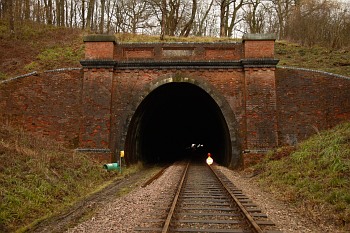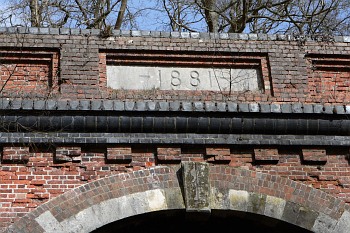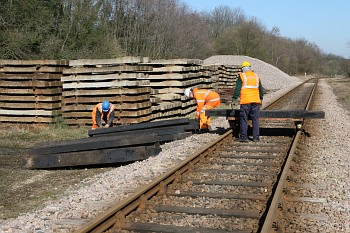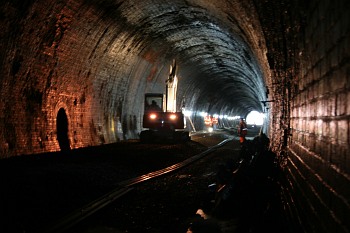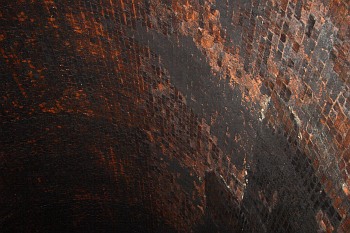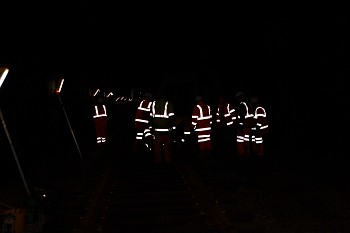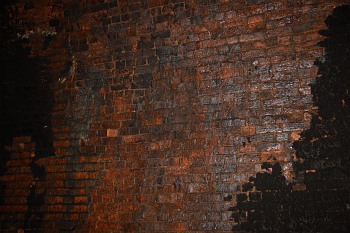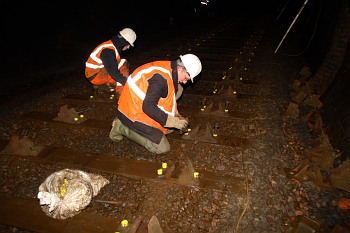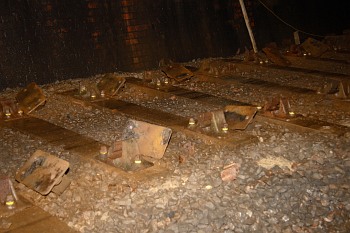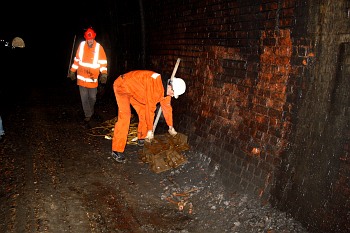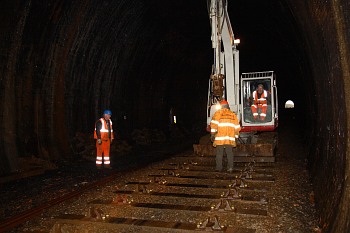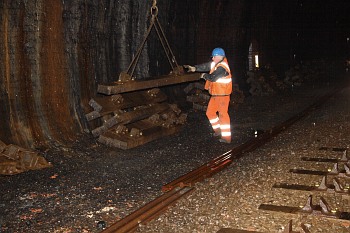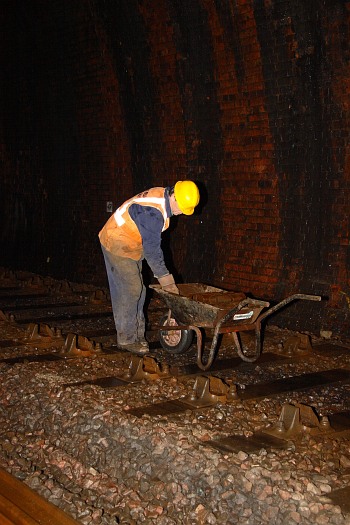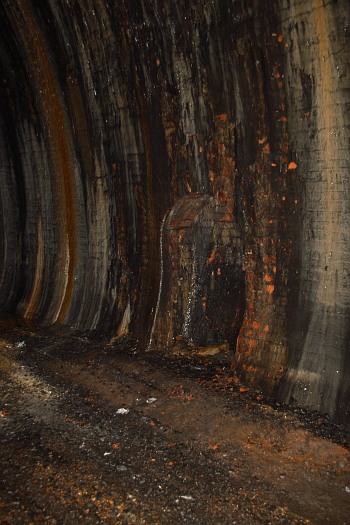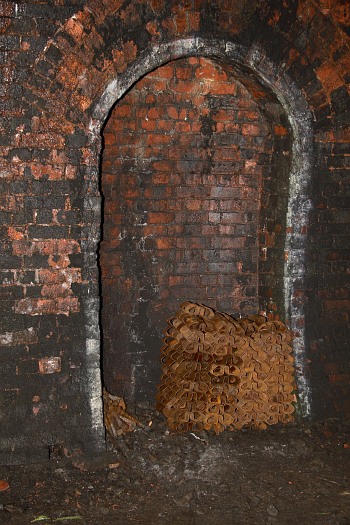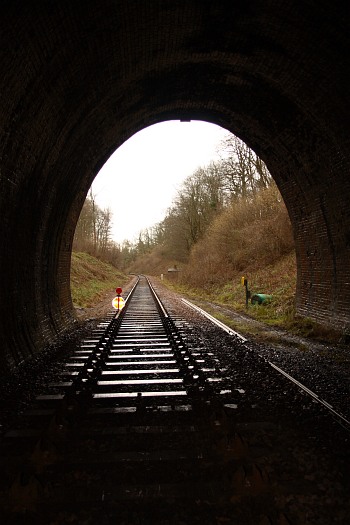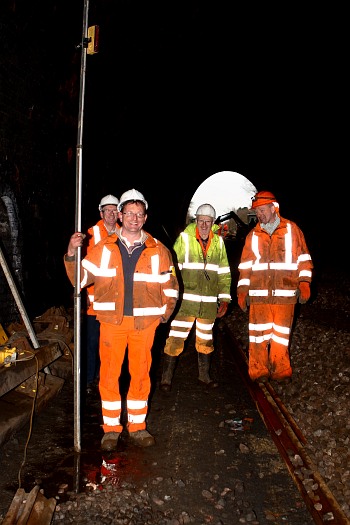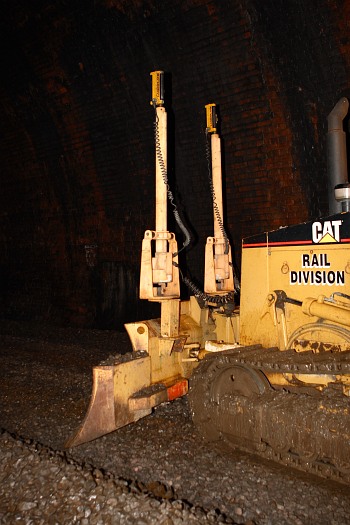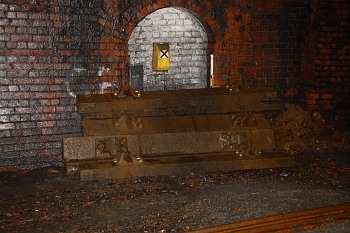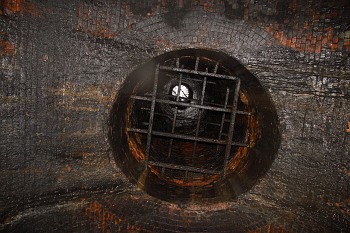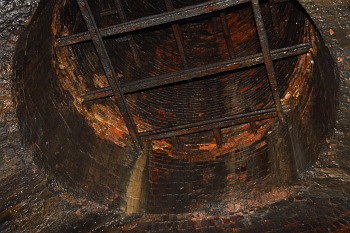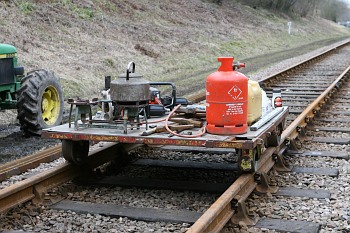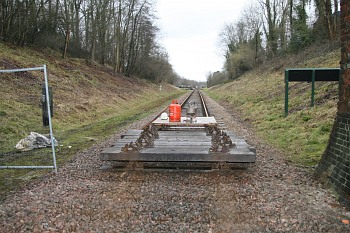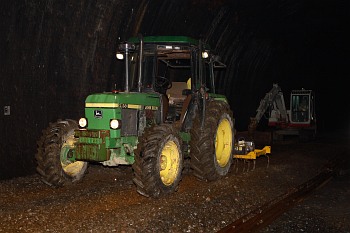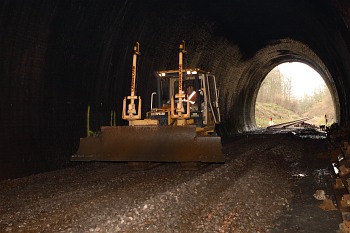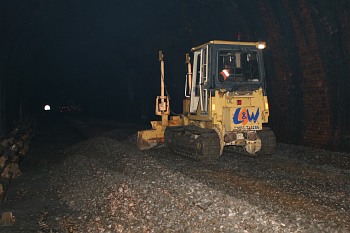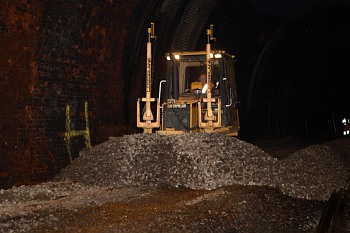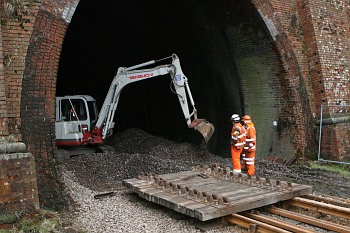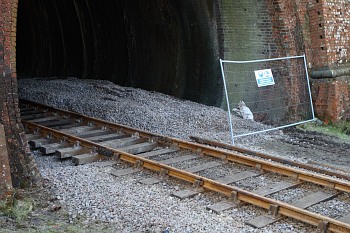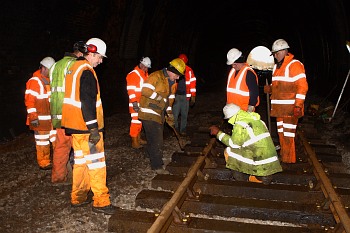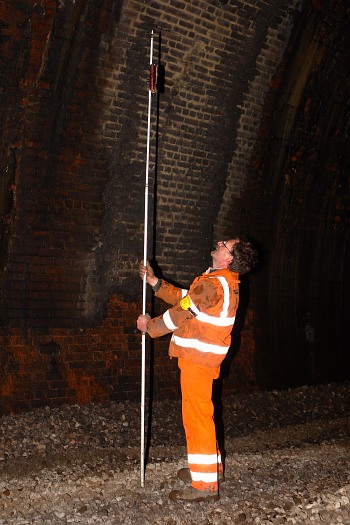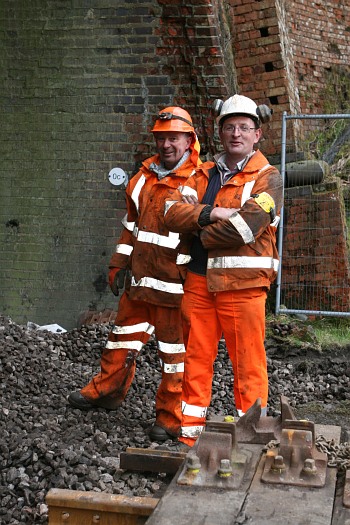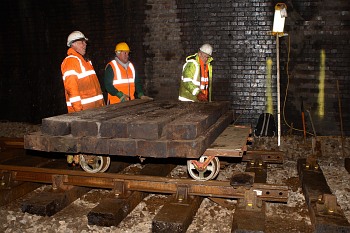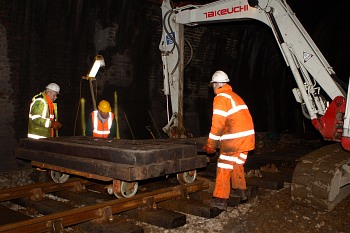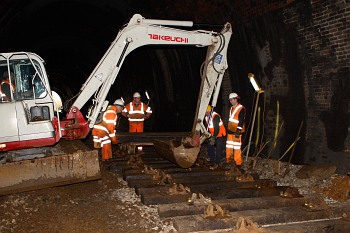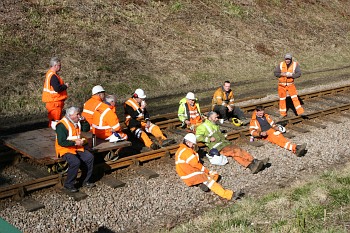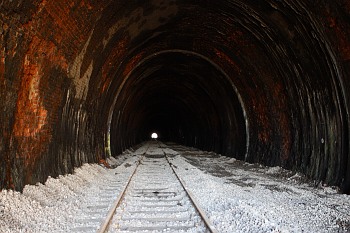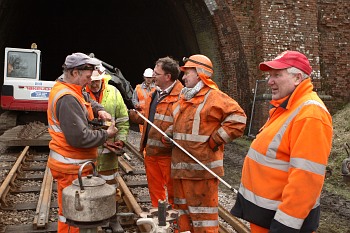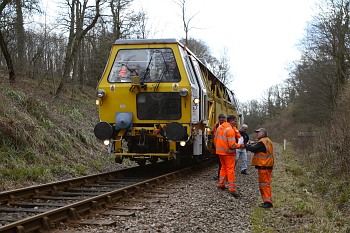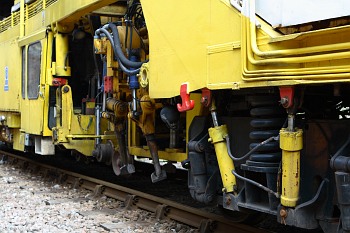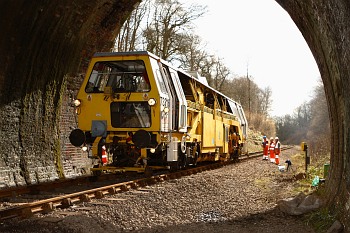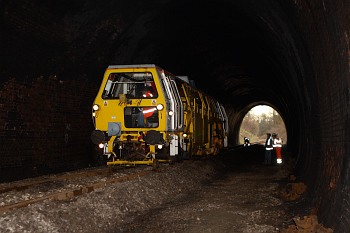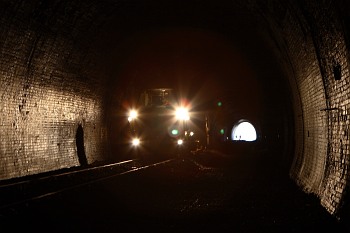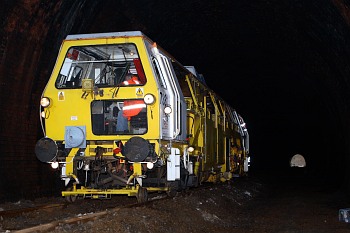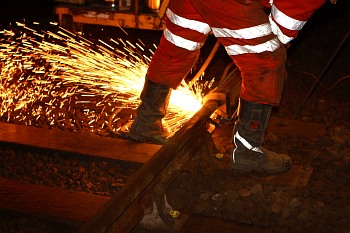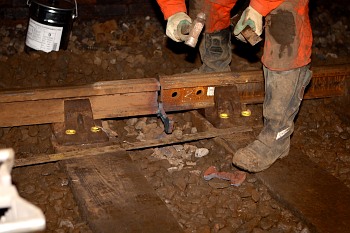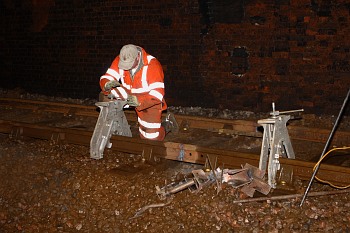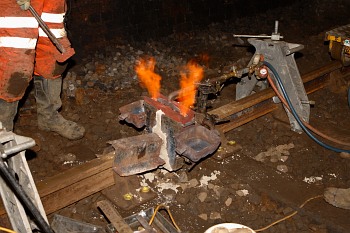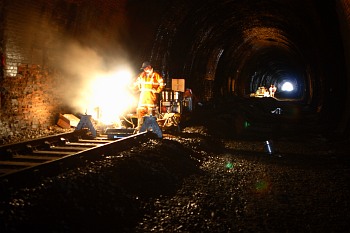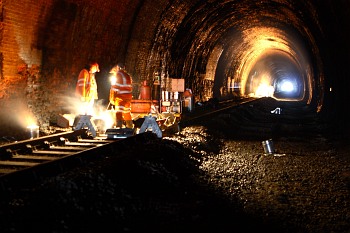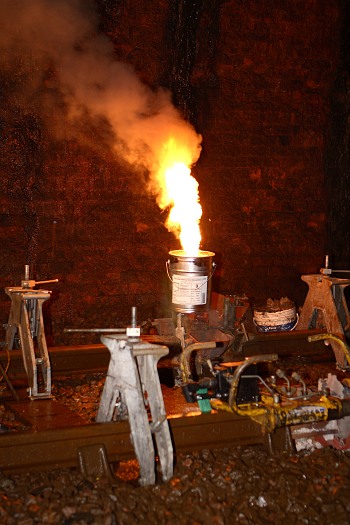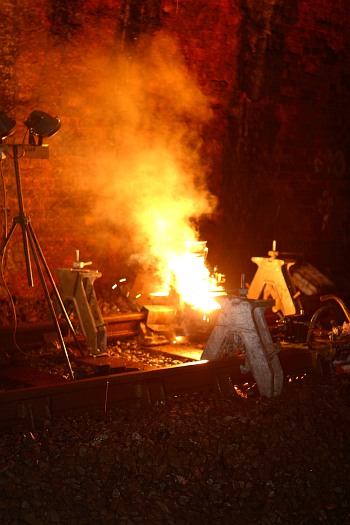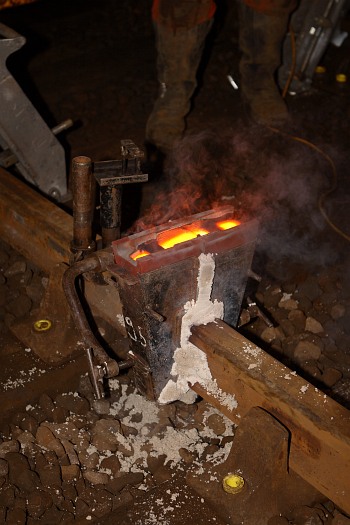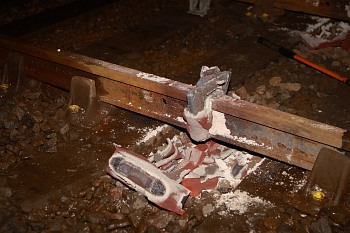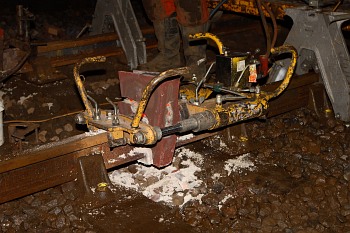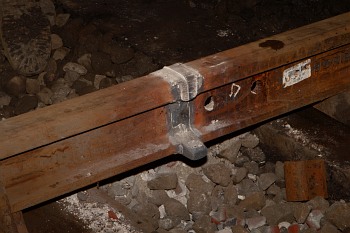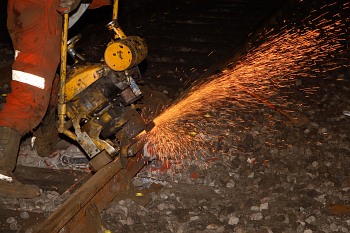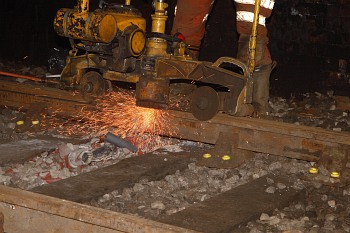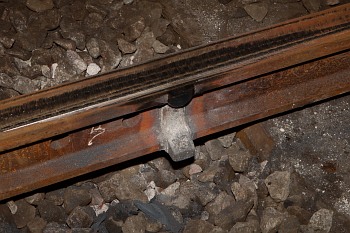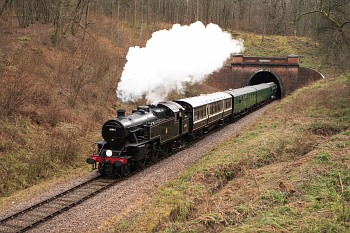

|


|

|
|
Archive of Infrastucture News: 2013-14 - 2015-16 - 2017 - 2018 - 2019 - 2020 - 2021-22 - 2023 Archive Reports: Northern Extension Project - Permanent Way and Lineside News (2007-2011) - P-Way News (2002-4) 

Track relaying in West Hoathly Tunnel 2010Text and photographs: Michael Hopps By clicking on the images you will be taken to a larger version of each photo showing more detail. For those of you not lucky enough to be involved with relaying the track through the tunnel, we can finally reveal details of all the subterranean 'goings on' back in late February and March. Many will have wondered how such a major undertaking could be completed in such a short timescale by a heritage railway; and for those working on the project, it was indeed an eye-opener to what could be achieved with minimum equipment and mostly volunteer labour. The credit for the organisation of the task must go to Infrastructure Director Chris White along with Matt Crawford, the Permanent Way Manager, who directly supervised operations and made sure everything ran smoothly and on time. Organising the relaying of the track through the tunnel was a major logistical exercise which started long before the work actually commenced. New 95lb/yard bullhead rail was ordered and delivered to Horsted Keynes well in advance, and one end of each length was pre-drilled ready for eventual alignment before sections were welded. Contractors for the specialist work had to be booked and a very tight time frame agreed so that, while allowing a small margin for inevitable delays on a project of this size, work would be completed in time for the new season. Preparatory work on the project started before the tunnel closure and the new rail was delivered to site and positioned on the up side throughout the length of the tunnel near the running rails. A number of new sleepers were also delivered to the north end of the tunnel, because for the new alignment the sleeper count was increased to allow for 28 per panel rather than the original 24. New and replacement sleepers were also required to replace those no longer deemed to be serviceable. A work compound was set up on the site of the old West Hoathly station for messing facilities, and as a base for deliveries and contractors. Once the 'tunnel gang' had full possession work started in earnest, and the track was disconnected at either end. From the north end keys and fishplates were removed panel by panel and pairs of old rails were jacked up and released from their chairs before being rolled to the centre of the sleepers. The rails were then dragged by digger to a temporary stack at the south end of the tunnel, ready for removal to the Salt Yard at Horsted Keynes. Meanwhile the 'Wickham' delivered pallets of new chairs and ferrules which were distributed throughout the length of the tunnel, ready to replace the old ones. Work now proceeded south in an organised pattern with each daily gang split into three groups: the first group removing the rails, the second group following closely behind replacing the old chairs, and finally the third gang working with the digger to lift the sleepers, with new chairs fitted, into stacks of five or six by the up side tunnel wall ready for relaying. All the old rail had been stripped out by Thursday 25th February and by Saturday 27th all the sleepers had been re-chaired and stacked. The following week work started on levelling and realignment – what would have been a very difficult and time-consuming job without the use of a laser-guided bulldozer which was hired in. The first job, however, was to break up the old ballast and the low-tech solution was a simple field rake on the back of a standard tractor! Readers will wonder why this was necessary, seemingly adding to the work involved; but it was important to break up the 'memory' in the ballast because, over many years' running, small pieces of ballast can compact into a hard pad under existing sleepers. This would badly affect re-alignment and, ultimately, drainage.
The tunnel was surveyed for correct levels before the job started, taking into account the 1 in 75 rise from the south. Markers were set up in a number of positions beforehand so that the levelling could take place in several stages, because the rotary laser level being used is only effective over a certain distance. Starting from the south end, the digger was positioned about 100yds in front of the dozer at a pre-determined spot and the laser level was set up on the roof of the cab. Then a levelling staff was walked down to the dozer to double-check accuracy. The dozer then moved towards the digger and the laser sensors on the blade followed the beam to maintain the correct alignment. If necessary corrections could be made as the work proceeded; however this was not found to be necessary, and the dozer job was so good you could have laid a straightedge along the top of the ballast. The excess ballast was pushed to one side to be re-used after the track was laid, and more ballast was brought in to finish the job before the tamper arrived. With the levelling complete, work now started on relaying the sleepers from the north end, at the new spacing and with the new rail. Fishplates were attached to each length provisionally for alignment, but this was only to hold everything in place until the welding was done. Tracklaying proceeded south with due attention being paid to side clearances, and new connections were made at both the north and south ends to include track circuit insulators. Tracklaying and ballasting was completed by the weekend of 13/14th March, and on the following Monday the tamper travelled through the tunnel to complete the final task before the welding gangs arrived. Welding each of the 66 joints took place on the remaining days that week, with two gangs working from the north end of the tunnel about four joints apart. The thermit welding process required very precise alignment of the rails. With the fishplates removed and a chair from either side of the joint moved out of the way, the positioning jigs could be set up. A gap (about 25mm) was made between the rail ends with a cutting torch, and then moulds were fixed either side of the joint to contain the weld metal. Preheating of the rail ends is done with another oxy-propane torch in preparation for the thermit welding process, which relies on an aluminothermic reaction to make the weld. I won't bore you with the details, but suffice to say that when the crucible can containing the chemicals is ignited with something resembling a sparkler, the result is akin to a good show on bonfire night. Within the confines of the tunnel, and in more or less complete darkness, the effect is really spectacular. The moulds are broken away shortly afterwards and then the excess weld is trimmed of waste metal while still hot, leaving only a little excess for later grinding.
Friday 18th March was the final day of working, when the welding gang completed their contract by grinding all the welded joints down to the rail profile while also re-checking alignment. Any final snagging and checking of chairs and keys was done that weekend, and the tunnel was declared open for traffic. Possession was handed back to the operations department a week earlier than originally planned. The first public service started the following week, on 27th March.
For those of you who like numbers, the following tally gives some idea of the scale of the operation. West Hoathly Tunnel is 731 yds long and 129 years old. During the track relaying about 20 volunteer members were involved on various days as well as three full-time members of staff. Some days saw up to 12 people working, and on others there were as few as three. 1,008 sleepers were moved twice. 2,016 chairs were replaced using 6,048 screws and ferrules. 72 new rails were laid and 66 welds were made. The only figures we don't have to hand are the number of miles walked by the various volunteer members involved, and the gallons of tea consumed! 

Return to BRPS Home Page, to the Timetable or to Special Events Archive of Infrastucture News: 2013-14 - 2015-16 - 2017 - 2018 - 2019 - 2020 - 2021-22 - 2023 Archive Reports: Northern Extension Project - Permanent Way and Lineside News (2007-2011) - P-Way News (2002-4) Visitor Info. - Museum - Trust - Catering - Contacts - What's New - Projects - Locos - Carriages & Wagons - Signals - History - Other - Links - Search - FAQ Why not become a BRPS Member? - Get more involved as a Volunteer This page last updated 8 May 2010 by Michael Hopps and Richard Salmon, 6 September 2021. © Copyright BRPS. Privacy Policy |
